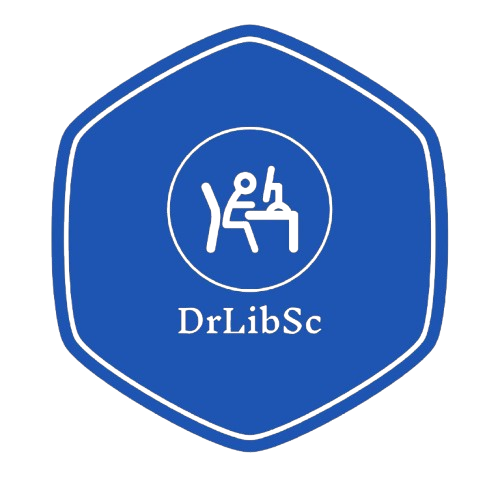Referencing Style: A study of PhD Theses in the University of Calcutta during 2019 to 2023 under the Faculty Council for Post-Graduate Studies in Engineering & Technology
DOI:
https://doi.org/10.63880/jlii.v1i1.14Keywords:
Referencing Styles, Citation Practices, Doctoral Theses, Academic Writing, Engineering Research, Shodhganga, Citation Consistency, Bibliometric AnalysisAbstract
Purpose: This study aimed to investigate the citation styles followed by researchers under the Faculty Council for Post-Graduate Studies in Engineering and Technology at the University of Calcutta between 2019 and 2023. It sought to identify the predominant referencing patterns and assess the extent of consistency in their application.
Methodology: A quantitative content analysis was conducted using dissertations available in the Shodhganga digital archive. Each dissertation was manually reviewed, categorized by department and year, and examined to identify the citation styles used. The analysis focused on commonly adopted styles such as IEEE, APA, Vancouver, Harvard, and the prevalence of mixed or inconsistent formats.
Findings: The results revealed that while IEEE, APA, Vancouver, and Harvard were the most frequently used styles, a significant number of dissertations relied on mixed citation formats. These were often applied inconsistently, reflecting the absence of a standardized referencing policy across departments. The study also observed that some disciplines demonstrated limited awareness of the variety of citation styles available or their importance in ensuring academic rigor.
Implications: The findings highlight the need for a university-wide referencing guideline to ensure uniformity in citation practices. Additionally, targeted training for researchers and stronger supervisory oversight are recommended to enhance academic quality, maintain consistency, and uphold scholarly integrity in doctoral research.
References
Adiyodi, K. G. (1993). New frontiers of knowledge (p. 365). Publication Division, University of Calicut.
Afolabi, M. (1983). A citation study of the literature of bibliographical classification to determine the core authors cited. Library Science, 20(4), 228–233. https://doi.org/10.17821/srels/1983/v20i4/49313
Arjun Lal, & Panda, K. C. (1999). Bradford's law and its application to bibliographical data of plant pathology dissertations: An analytical approach. Library Science with a Slant to Documentation and Information Studies, 6(3), 32–39.
Balasubramanian, S., & Bhaskar, P. A. (1984). Citation analysis in neurology from the point of view of Indian scientists. IASLIC Bulletin, 29(2), 63–67. https://shodhganga.inflibnet.ac.in/handle/10603/84339
Bandyopadhyay, A. K., & Nandi, A. (2001). Citation analysis of references used in doctoral dissertations of political science. Herald of Library Science, 40(3–4), 192–200.
Bhattacharya, S., Pal, C., & Arora, J. (2000). Inside the frontier areas of physics research: A macro-level analysis. Scientometrics, 47(1), 131–142.
Cole, F. G., & Eales, N. B. (1917). The history of comparative anatomy. Part I: A statistical analysis of the literature. Science Progress, 11, 578–596.
Damodaran, T. (1983). Theses and dissertations in development literature. In A. R. Chakraborty & S. K. Kapoor (Eds.), Proceedings of the 14th IASLIC Conference (pp. 26–29). INSDOC.
Das, A. (2000). Bibliometric analysis of publications in plasma physics contributed by the scientists at the Institute for Plasma Research. IASLIC Bulletin, 45(4), 145–160.
Das, S., & Mondal, P. (2021). Referencing style: A study of PhD theses in Jadavpur University during 2010 to 2016 under the Faculty of Arts. Library Philosophy and Practice (e-journal). University of Nebraska-Lincoln. https://digitalcommons.unl.edu/libphilprac/5668
Divecha, C. A., Tullu, M. S., & Karande, S. (2023). The art of referencing: Well, begun is half done! Journal of Postgraduate Medicine, 69(1), 1–6.
Fletcher, G., & Greenhill, A. (1995). Academic referencing of internet-based resources. The Australian Library Journal, 44(4), 177–187. https://doi.org/10.1080/00049670.1995.10755721
Gopikuttan, A. (2005). Scientometric analysis of the research productivity of university teachers. In G. Devarajan (Ed.), Applied research in library and information science (pp. 166–179). Ess Ess publications.
Gravett, K., & Kinchin, I. M. (2021). The role of academic referencing within students’ identity development. Journal of Further and Higher Education, 45(3), 377–388.
Santini, A. (2018). The importance of referencing. The Journal of Critical Care Medicine, 4(1), 3.
Shodhganga. (n.d.). Shodhganga: A reservoir of Indian theses. INFLIBNET Centre. https://shodhganga.inflibnet.ac.in/
University of Calcutta. (n.d.). Departments. https://www.caluniv.ac.in/academic/departments.html
Downloads
Published
How to Cite
Issue
Section
License
Copyright (c) 2025 Prasenjit Paul, Saptami Das, Ashim Kumar Paul

This work is licensed under a Creative Commons Attribution-NonCommercial 4.0 International License.
CC BY-NC 4.0
Deed (See the legal code)
You are free to:
- Share — copy and redistribute the material in any medium or format
- Adapt — remix, transform, and build upon the material
- The licensor cannot revoke these freedoms as long as you follow the license terms.
Under the following terms:
- Attribution — You must give appropriate credit , provide a link to the license, and indicate if changes were made . You may do so in any reasonable manner, but not in any way that suggests the licensor endorses you or your use.
- NonCommercial — You may not use the material for commercial purposes .
- No additional restrictions — You may not apply legal terms or technological measures that legally restrict others from doing anything the license permits.
Notices:
You do not have to comply with the license for elements of the material in the public domain or where your use is permitted by an applicable exception or limitation .
No warranties are given. The license may not give you all of the permissions necessary for your intended use. For example, other rights such as publicity, privacy, or moral rights may limit how you use the material.


